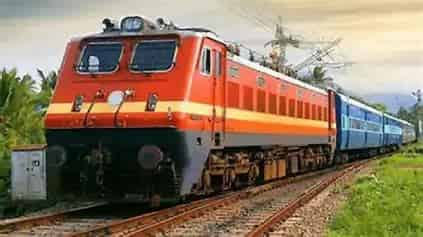Railways Accelerating Growth Through PPP Model for New Track Development
The tugs are built to the Approved Standard Tug Design and Specifications (ASTDS) promulgated by the Government of India, for promoting Atma Nirbhar Bharath initiatives.

Railways Accelerating Growth Through PPP Model for New Track Development
Indian Railways plans to adopt the public-private partnership (PPP) model to accelerate the development of new projects and share the costs of large-scale infrastructure initiatives. This includes major projects such as the creation of commercial lines like mineral corridors, which are expected to be rolled out in the coming months under the PPP framework.
The government believes that leveraging the PPP model for new projects will enable better allocation of resources to other critical infrastructure development needs.
Budget Expectations for FY26
During a recent inter-ministerial meeting, officials emphasized the need for Indian Railways to diversify its approach beyond traditional methods of engineering, procurement, and construction. By embracing the PPP model, the aim is to create more sustainable and efficient pathways for infrastructure growth.
Despite this shift, Indian Railways is expected to receive a significant boost in capital expenditure in the upcoming fiscal year. The allocation is projected to increase substantially from the current budget of ?2.62 lakh crore.
While progress in project execution under the PPP model has been gradual, Indian Railways continues to independently finance infrastructure development. It operates freight trains and recovers investments through freight transportation charges.
A senior government official stated that new commercial rail lines will be developed under the public-private partnership (PPP) model. However, key decisions related to passenger fares and train movements will remain under the authority of the Railway Board.
Key Economic Corridor Initiatives
Currently, Indian Railways operates three major economic corridor projects focused on cement, energy (particularly coal), and minerals. These corridors are designed to improve port connectivity and alleviate heavy traffic congestion. The expected investment in these rail corridors for energy, mining, and cement could exceed ?5.25 lakh crore by 2031.
Additionally, around 114 port-rail connectivity initiatives worth ?1 lakh crore have been launched under the Sagarmala program. As of March 2024, 49 projects worth ?26,385 crore have been completed, with 65 others at various stages of completion.
The Budget for 2024-25 has allocated ?68,634.44 crore for the development of new lines, gauge conversion, and doubling. PPP corridors are expected to follow a model similar to Merry-Go-Round (MGR) networks, which are currently used for dedicated short-haul cargo services, such as transporting coal from mines to the Indian Railways system.